
Vilvius — In many ways, Lithuania pioneered the glorification of Nazi collaborators on a state level. It has perverted museums and tourist sites; celebrated perpetrators as national heroes; persecuted Holocaust survivors who defended themselves with pre-trial investigations for "war crimes;" destroyed a prominent author's livelihood for the crime of admitting Lithuanians participated in the Holocaust; and is debating denialist legislation similar to Poland's.
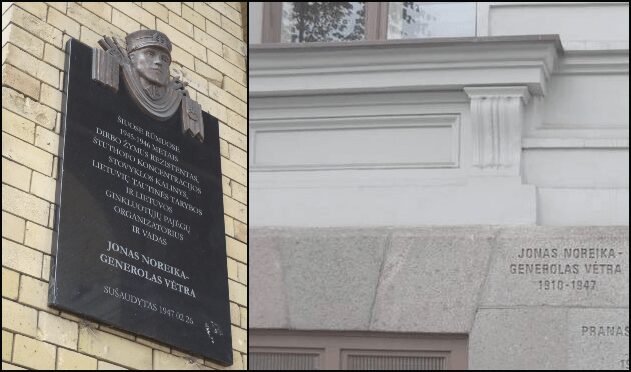
(Many thanks to Defending History founder Dovid Katz for his invaluable guidance on Lithuania and permission to use Defending History's Lithuania photos. For more on Dovid's crucial role in the vanguard of identifying and combating Holocaust distortion, see the methodology section.)
Šukioniai — Noreika is also honored with a plaque in Šiauliai, a street in Kaunas (using his nom de guerre General Storm), a school and this monument in his home village, above right. See the New York Times report, the Baltic News Network story on the U.S. State Department and Noreika and Defending History's Noreika page.
For more on Noreika, see Salon and the Times of Israel articles by his granddaughter Silvia Foti, who set out to write a book about her grandfather, only to discover he was a Nazi collaborator.

The wave of antisemitic murder that began on June 23 fed into the subsequent genocide in which the Nazis, with the aid of local collaborators, exterminated 95-96% of Lithuania's Jews, the highest murder rate in the Holocaust. Above right is the June 23 Street in Vilnius. Above left, in middle of the photo, LAF founder Kazys Škirpa (1895-1979) meets with Hitler.
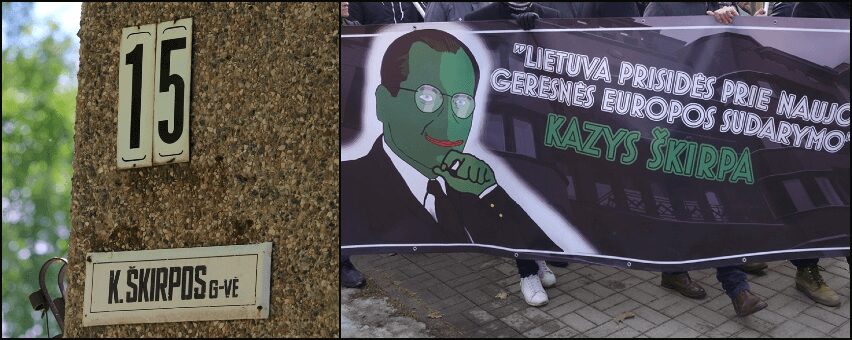
In the early months of 1941, while in Germany, Škirpa suggested eliminating Jews from Lithuania. After the war, he decamped to America, where he worked for the Library of Congress. His obituary in the Washington Post portrays Škirpa — the man eagerly served as an envoy to Hitler's Germany — as a victim of the Germans. Above right, a far-right march in Kaunas with Škirpa as Pepe the Frog, a right wing meme, Feb 1, 2017. Lithuania's far-right, like that of other nations covered here, often anchors annual gatherings to the glorification of Nazi collaborators.
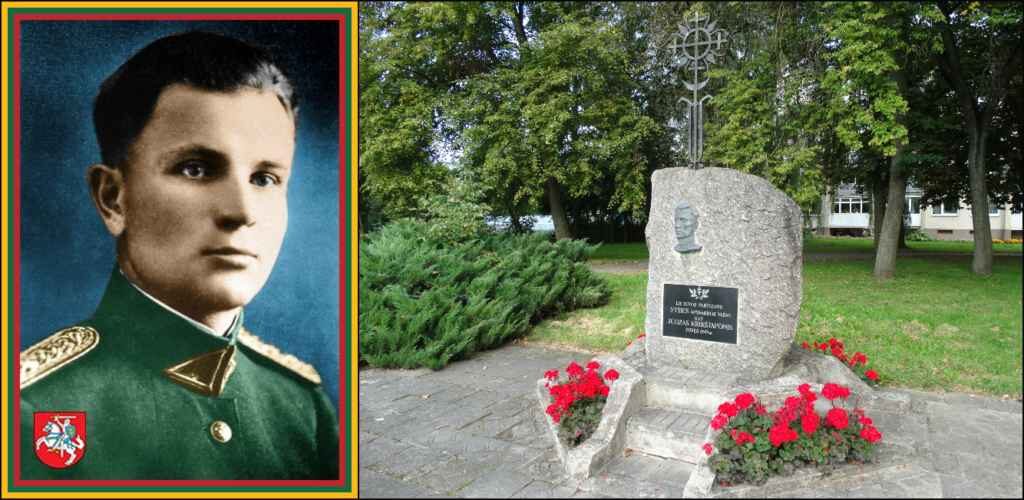
See chilling reports by Evaldas Balčiūnas in Defending History and Grant Gochin in the Times of Israel. (Thanks to Grant Gochin for the Krikštaponis image.)
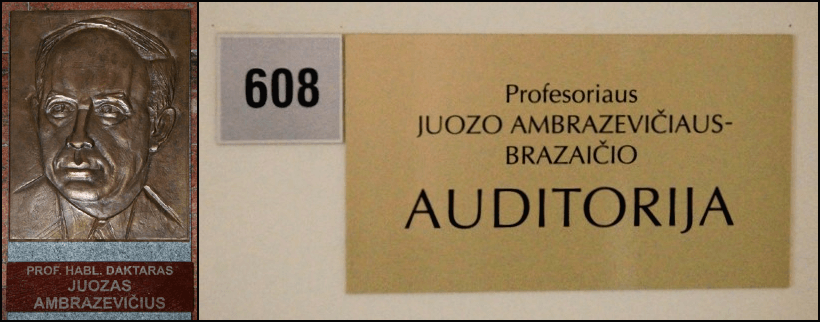
Brazaitis presided over Lithuania in 1941, when Jews were slaughtered by both Nazis and Lithuanian collaborators. Brazaitis signed orders confirming the creation of Lithuania's first mass-murder camp; later, he ordered all of Kaunas' Jews to be imprisoned in a ghetto.
After the war, Brazaitis emigrated to the West, living in Germany and the U.S. In 2012, a major scandal broke out over the state's reburial of Brazaitis with full honors. See JTA report and Defending History's coverage.

Vilnius and six other towns — In front of the Lithuanian Ministry of Defense stands an imposing black monument to Jonas Žemaitis aka Žemaitis-Vytautas (1909-1954), [see header image] who served in the Lithuanian Territorial Defense Force, a volunteer militia created with the aim of providing military aid to the Nazis. Contemporaneous reports make it likely Žemaitis may have served in a Lithuanian auxiliary police battalion — one of the Nazi-organized units that were engaged in operations of mass murder of Jews. See detailed reporting by Evaldas Balčiūnas for Defending History.
Additional honors include a plaque in Šiluva and another in the Kėdainiai Regional Museum (below left); a monument in Raseiniai (below right) and another in Palanga; a bust in the memorial park of Kaunas' Vytautas the Great War Museum; and schools in Raseiniai and Šimkaičiai.
Žemaitis is also the namesake of the state-run Military Academy of Lithuania, which coordinates with other academies in NATO nations such as the Virginia Military Institute. (See here for a bas-relief of Žemaitis on the academy.)
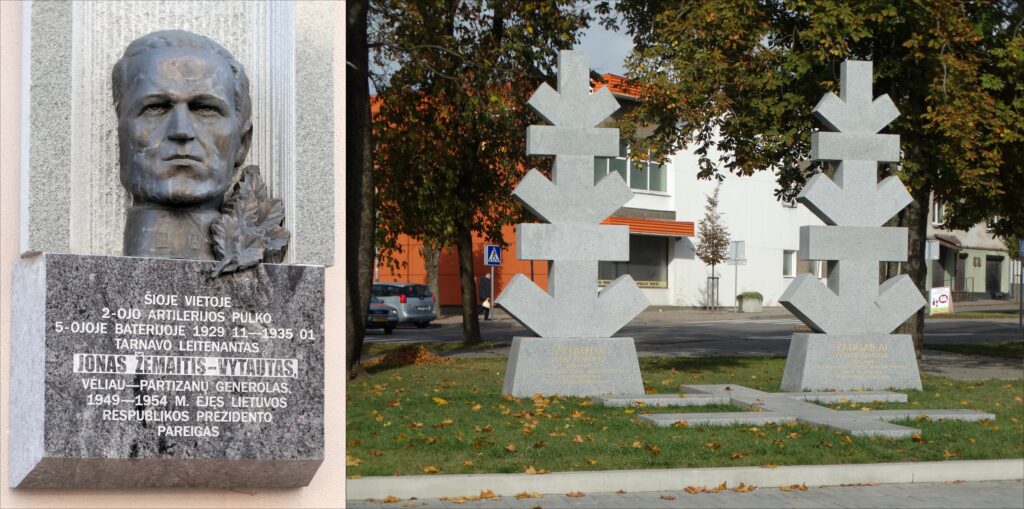
Plechavičius also has a bust in the memorial park of Kaunas' Vytautas the Great War Museum; a memorial plaque and a cadet academy in Kaunas; another memorial plaque in Skuodas; and a square in Panevėžys.
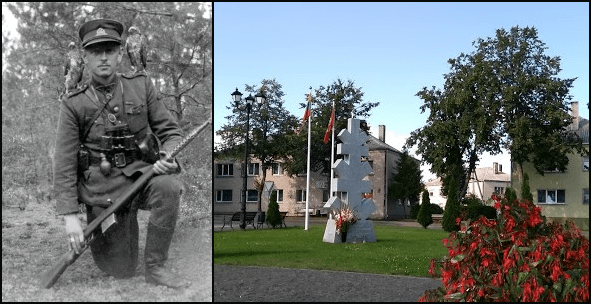
While there's no direct paper trail linking Ramanauskas to murders of Jews, the fact remains he was the leader of a unit in a Nazi-allied militia whose murders and atrocities are well-documented, including by two major articles published by Lithuanian ethicist Evaldas Balčiūnas in 2014 and 2017. The connections were worrisome enough for the Simon Wiesenthal Center and the World Jewish Congress to condemn glorification of Ramanauskas. It also led authorities in New Britain, Conn. to reject plans to erect a Ramanauskas memorial (see the U.S. section).
Other honors include a memorial plaque in Lazdiljai and another in Panevėžys; a street in Kaunas; a combat training center in Nemenčinė (with a bust of Ramanauskas on the grounds); and a school in Alytus (with a bust, plaque and monument on the grounds).
Below, a 2016 far-right march in Kaunas. The banner proclaims "We know our heroes!" while featuring (from left to right) Adolfas Ramanauskas-Vanagas, Jonas Noreika, Povilas Plechavičius, Kazys Škirpa, Antanas Baltūsis-Žvejas and Juozas Ambrazevičius-Brazaitis. All are either proven or alleged Nazi collaborators and/or Holocaust perpetrators. Half were welcomed by America after the war. See Defending History's coverage. For a monument to Adolfas Ramanauskas outside of Lithuania, see the U.S. section.
Note: the entries below were added during the January 2022 project update.
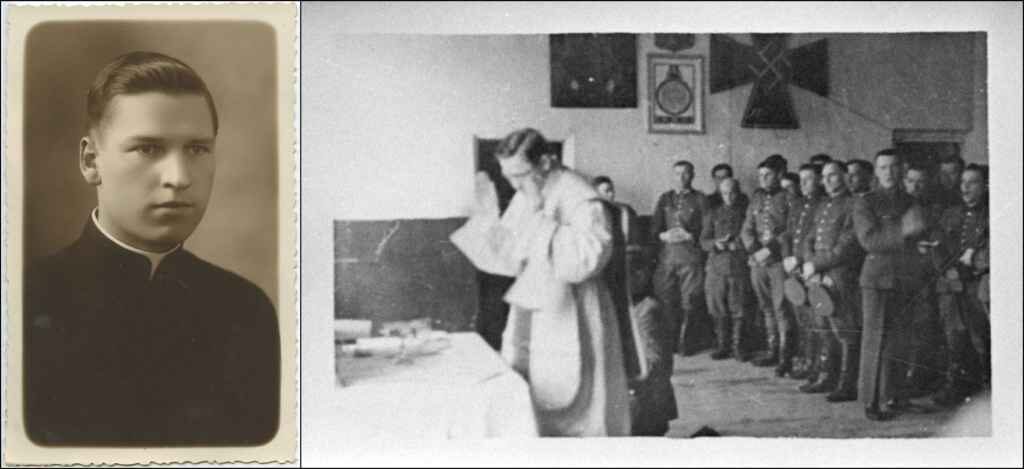
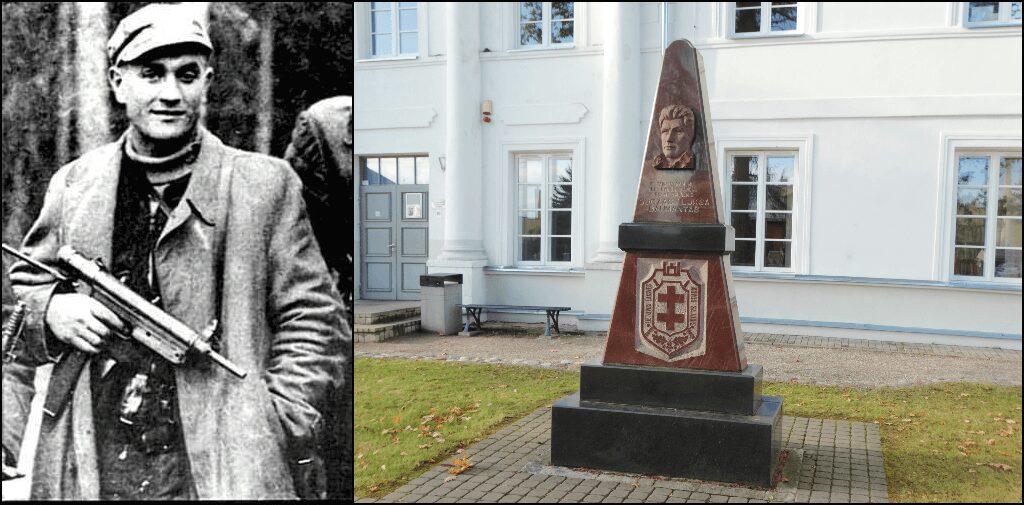
Lukša also has a school (with museum) and two streets (one with plaque) in Kaunas; a museum (with bas-relief) and monument (above, right) in Veiveriai; a sign and monument in his birth village Juodbūdis; a monument in Liubavas (Kalvarija municipality); a street in Prienai; and a Lithuanian Armed Forces training center in Rukla.
See detailed coverage by Defending History and report in Jewish Chronicle.
For more on Lithuania's widespread Holocaust distortion, see the New York Times on Vilnius' Holocaust museum, with quotes from Defending History's Dovid Katz, Defending History's page on other Lithuanian locations honoring Nazi collaborators, and Defending History's Lithuania page.
For a first-hand account of Lithuanian authorities harassing writers and researchers who wrote about collaborators, see essays by Evaldas Balčiūnas in Defending History.
For the legal aspects, see coverage of Grant Gochin - a man who lost over 100 family members in the Holocaust in Lithuania and who's bringing legal action against Vilnius' whitewashing in the European Court of Human Rights. Reports in the Times of Israel and EU Today.
For the fascinating story of Silvia Foti, the granddaughter of Jonas Noreika who was told her grandfather was a hero only to discover he was a Holocaust perpetrator, see Silvia Foti's blog and articles in Salon and the Chicago Tribune.
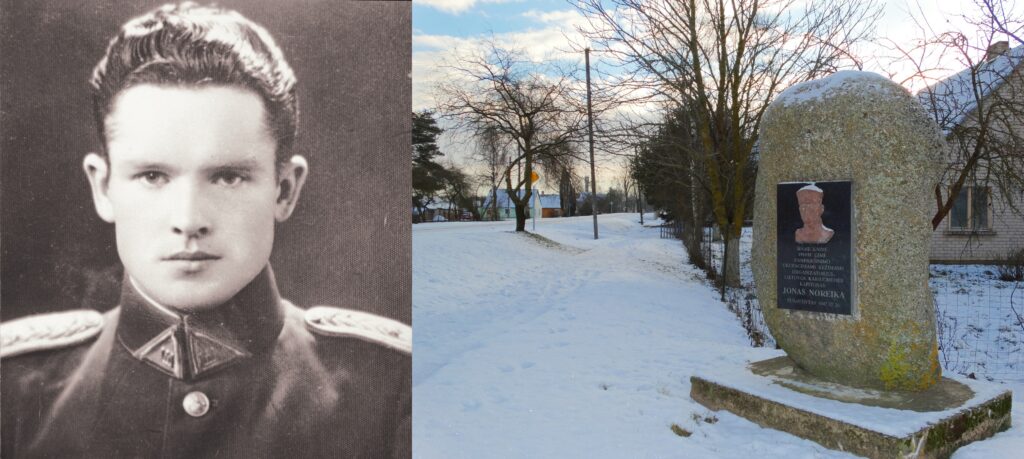
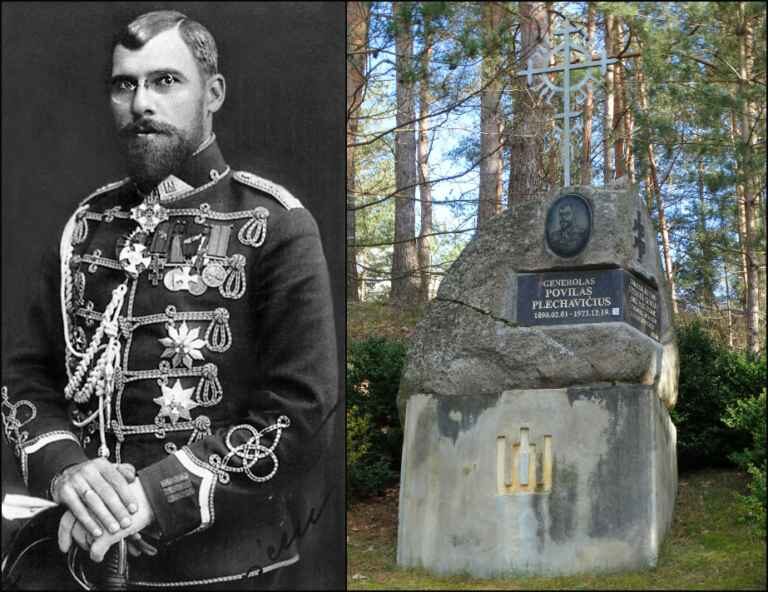


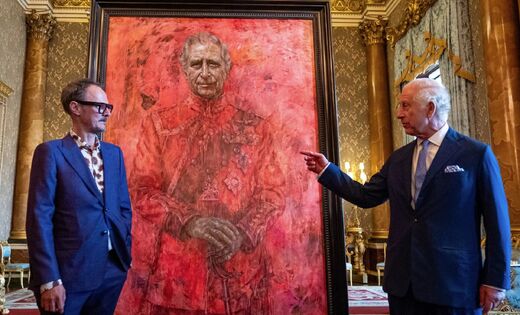
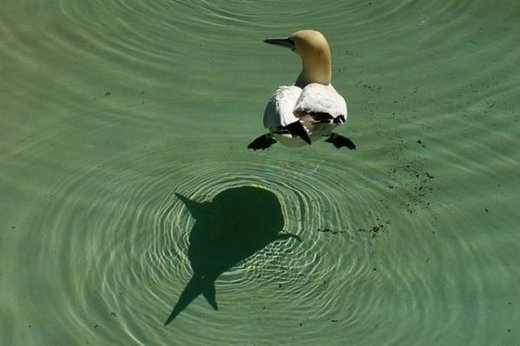
Reader Comments
I prove my point by Russia who hates war and it's puffy face vaxxed leader who said he didnt want war nor did the Russian people and he proved himself .....by going to war (proving War is Peace....because he said it, which manifests'o's it as truthful on the bases of the greenlight for sanctions that all rested firmly on the Russian leader (who answers to NO ONE ....only "good" Jews who have his back!)
RT confirmed it.
Proven.
They are EVERYWHERE!
A "good" Jew told me!
Conclusion: no argument.